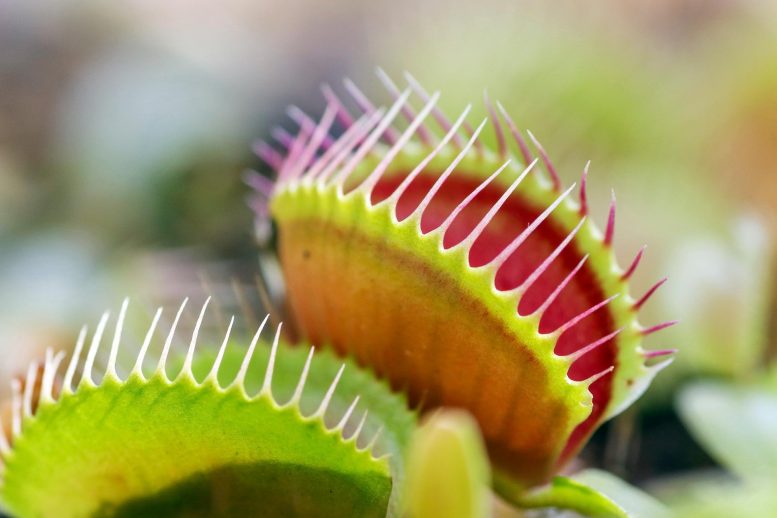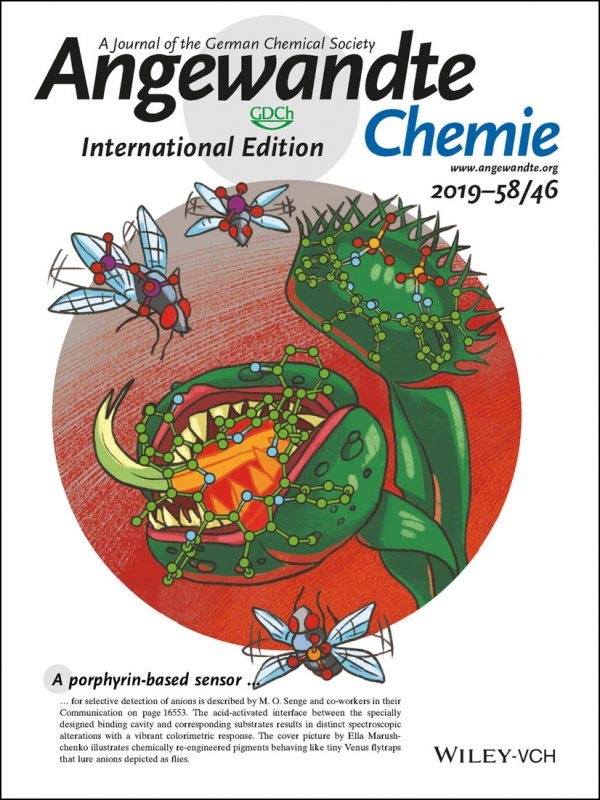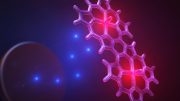
Scientists built tiny Venus flytrap-like biological sensors that can detect and capture certain molecules, such as pollutants.
Scientists from Trinity College Dublin have created a suite of new biological sensors by chemically re-engineering pigments to act like tiny Venus flytraps. The sensors are able to detect and grab specific molecules, such as pollutants, and will soon have a host of important environmental, medical, and security applications.
Porphyrins, a unique class of intensely colored pigments — also known as the “pigments of life” — provide the key to this ground-breaking innovation.
The word porphyrin is derived from the Greek word porphura, meaning purple, and the first chapter detailing the medical-chemical history of porphyrins goes back to the days of Herodotus (circa 484 to 425 BC). This tale has been progressing ever since and is at the heart of Professor Mathias O. Senge’s work at Trinity.
“These sensors are like Venus flytraps. If you bend the molecules out of shape, they resemble the opening leaves of a Venus flytrap and, if you look inside, there are short stiff hairs that act as triggers. When anything interacts with these hairs, the two lobes of the leaves snap shut.” — Karolis Norvaiša
In living organisms, porphyrins play an important role in metabolism, with the most prominent examples being heme (the red blood cell pigment responsible for transporting oxygen) and chlorophyll (the green plant pigment responsible for harvesting light and driving photosynthesis).
In nature, the active versions of these molecules contain a variety of metals in their core, which gives rise to a set of unique properties.
The researchers at Trinity, under the supervision of Professor Mathias O. Senge, Chair of Organic Chemistry, chose a disruptive approach of exploring the metal-free version of porphyrins. Their work has created an entirely new range of molecular receptors.
By forcing porphyrin molecules to turn inside out, into the shape of a saddle, they were able to exploit the formerly inaccessible core of the system. Then, by introducing functional groups near the active center they were able to catch small molecules — such as pharmaceutical or agricultural pollutants, for example pyrophosphates and sulfates — and then hold them in the receptor-like cavity.

The research is featured as a hot paper in Angewandte Chemie International Edition. and has also been selected as the journal’s cover illustration.
Porphyrins are color-intense compounds so when a target molecule is captured this results in the color changing drastically. This underlines the value of porphyrins as bio-sensors because it is clear when they have successfully captured their targets.
Karolis Norvaiša, an Irish Research Council-funded Ph.D. Researcher at Trinity, and the first author of the study, said:
“These sensors are like Venus flytraps. If you bend the molecules out of shape, they resemble the opening leaves of a Venus flytrap and, if you look inside, there are short stiff hairs that act as triggers. When anything interacts with these hairs, the two lobes of the leaves snap shut.”
“The peripheral groups of the porphyrin then selectively hold suitable target molecules in place within its core, creating a functional and selective binding pocket, in exactly the same way as the finger-like projections of Venus flytraps keep unfortunate target insects inside.”
The discovery was recently published in the print version of the leading international journal Angewandte Chemie International Edition and is featured as a hot paper. It has also been selected as the journal’s cover illustration.
The work highlights the beginning of an EU-wide H2020 FET-OPEN project called INITIO, which aims to detect and remove pollutants. The work was made possible by initial funding from Science Foundation Ireland and an August-Wilhelm Scheer guest professorship award for Professor Senge at the Technical University of Munich.
Professor Senge added:
“Gaining an understanding of the porphyrin core’s interactions is an important milestone for artificial porphyrin-based enzyme-like catalysts. We will slowly but surely get to the point where we can realize and utilize the full potential of porphyrin-substrate interfaces to remove pollutants, monitor the state of the environment, process security threats, and deliver medical diagnostics.”
Reference: “Conformational Re‐engineering of Porphyrins as Receptors with Switchable N−H⋅⋅⋅X‐Type Binding Modes” by Karolis Norvaiša, Dr. Keith J. Flanagan, Dáire Gibbons and Prof. Dr. Mathias O. Senge, 14 August 2019, Angewandte Chemie International Edition.
DOI: 10.1002/anie.201907929









Be the first to comment on "“Venus Flytrap” Bio-Sensors Engineered to Snare Pollutants"